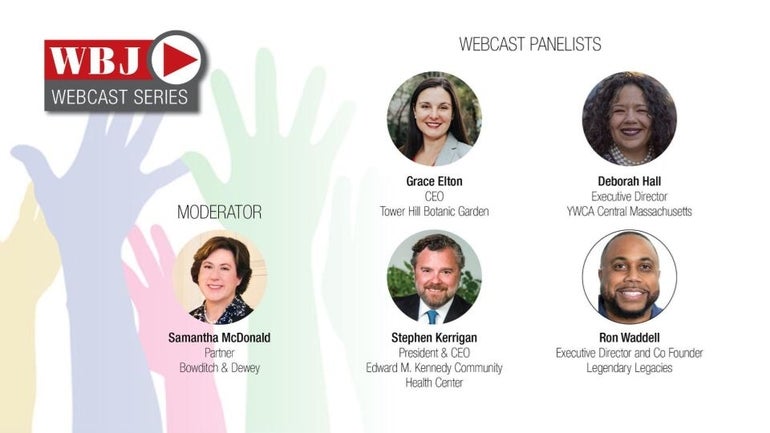As community resource centers, nonprofit organizations saw the impacts of the coronavirus pandemic on the community first-hand. While experiencing a huge increase in demand for services, nonprofits had to navigate providing resources while staying socially distanced.
During a WBJ webinar on Tuesday entitled, “COVID and Beyond: Nonprofit Innovation”, a group of nonprofit leaders spoke about how their companies’ abilities to adapt helped their organizations survive the toll of the pandemic. Together the panelists discussed what innovative steps they took, the lasting impacts of these new strategies, and the surprising silver linings that resulted.
“I feel like people feel more connected now, which is bizarre since we were so separated in more ways than we were, but there is this connective tissue that all of us in our communities have now that we did not have pre-pandemic,” said Steve Kerrigan, president and CEO of the Edward M. Kennedy Community Health Center.
Deborah Hall, executive director of YWCA Central Massachusetts, spoke about how the pandemic led the YWCA to be more innovative in supporting its core mission, providing emergency childcare for healthcare workers, setting up equity vaccine clinics, and using tele-advocacy to reach domestic violence survivors during lockdowns.
Collaboration amongst nonprofit organizations was key as these institutions reached out to one another to help meet the emergency needs of their communities. “We weren’t in competition, we were trying to help each other survive,” Hall said.
Ron Waddell, executive director and co-founder of Legendary Legacies, developed a job training program to bring at-risk young men to the Worcester Housing Authority and the Worcester Food Bank as they helped supply food and essentials to under-resourced communities and senior citizens during the pandemic.
“That whole piece allowed us to compensate them and bring them into spaces where they were not typically seen as liabilities, but now seen as assets to the community and so there were a number of different fronts where we saw that program and the collaboration really support not just our participants, but the greater community as a whole,” Waddell said.
While the pandemic was often described as a “nightmare,” panelists agreed that teaming up with fellow nonprofits, recognizing the benefits of virtual programs, and listening to the needs of their communities were all key takeaways that have made their nonprofits stronger.

